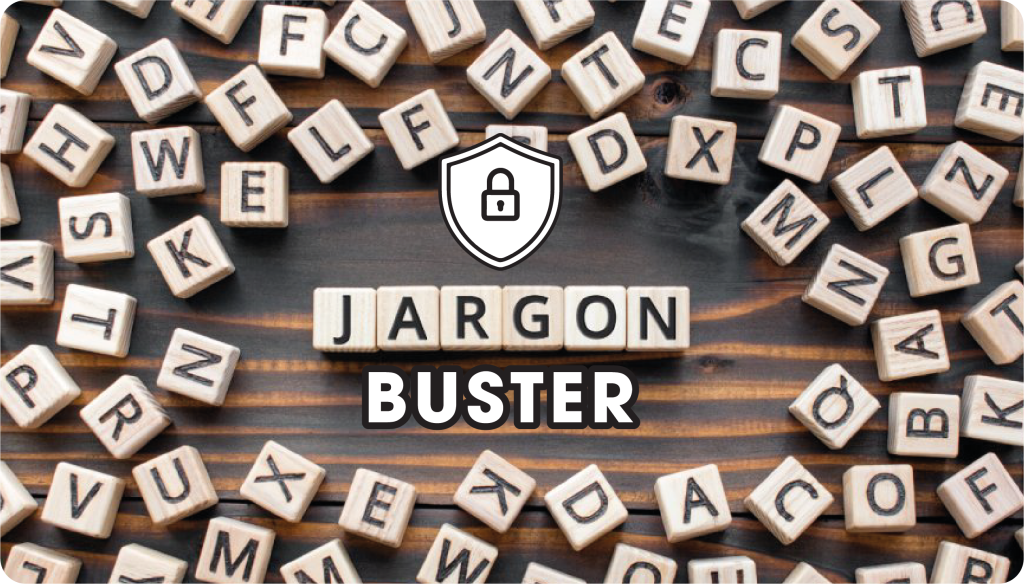Jargon Buster: Demystifying IT Terminology
Cybersecurity Edition

Jargon Buster
The jargon buster aims to give simple, plain English explanations of typical words and/or phrases used in security and cybersecurity, making it easier to stay informed.
Zero Trust:
Security approach assuming no inherent trust, requiring continual user and device authentication.
Phishing:
Cyberattack where malicious actors impersonate entities to trick individuals into revealing sensitive information.
Ransomware:
Malicious software encrypting files, demanding ransom for decryption; paying does not guarantee data return.
Malware:
Malicious software (viruses, Trojans, worms, spyware) designed to harm or exploit computer systems.
Penetration Testing (Pen Test):
Simulating cyberattacks to identify system vulnerabilities and weaknesses.
Multi-Factor Authentication (MFA):
Security process requiring two or more forms of identification for enhanced login security.
Firewall:
Network security device or software filtering traffic based on predefined rules, acting as a barrier between trusted and untrusted networks.
Encryption:
Converting data into code to prevent unauthorised access, ensuring unreadability without decryption key.
Cyber Threat Intelligence (CTI):
Information about potential cybersecurity threats, including tactics employed by malicious actors.
Incident Response (IR):
Structured approach to addressing and managing the aftermath of a cybersecurity incident.
Patch Management:
Regularly updating software, operating systems, and applications to fix known vulnerabilities.
DDoS Attack (Distributed Denial of Service):
Attack flooding a target system with traffic from compromised computers (botnets).
Vulnerability Assessment:
Identifying, classifying, and prioritising security vulnerabilities in systems, networks, and applications.
Two-Factor Authentication (2FA):
Security process requiring users to provide two authentication factors for enhanced login security.
Endpoint Security:
Protection of individual devices from cybersecurity threats.
Data Breach: Incident where sensitive data is accessed, disclosed, or stolen by unauthorized individuals or entities.
Security Audit:
Evaluation of an organisation’s security policies, practices, and controls for effectiveness and compliance.
SOC (Security Operations Centre):
Centralised unit monitoring, detecting, and responding to cybersecurity incidents in real-time.
DMZ (Demilitarised Zone):
Network segment separating internal and external networks, often used for public-facing services.
SIEM (Security Information and Event Management):
Software providing real-time analysis of security alerts from various network sources.
Want to learn more about our services?
Other Articles & Blogs
Technology with a Heart: Why People-Centred Leadership Drives Business Success
Technology with a Heart: Why People-Centred Leadership Drives Business SuccessThe Power of People in Business In the digital age, the backbone of any enterprise is its IT infrastructure. This includes not only servers, computers, and networking equipment but also the...
How Advances in Telecommunications Have Impacted the Human Race
How Advances in Telecommunications Have Impacted the Human RaceA Revolution in ConnectivityDuring the pandemic, improvements in telecommunications changed the way the world worked. VOIP systems allowed employees to work from virtually anywhere, staying connected to...
Discover the latest Unity news!
Discover the latest Unity news! Welcome Anna!As part of our continued growth, we’re excited to welcome Anna Pershyna to the Unity team as our new Tech Shop marketer. With over 10 years of marketing experience, Anna is eager to contribute to the launch and growth of...



